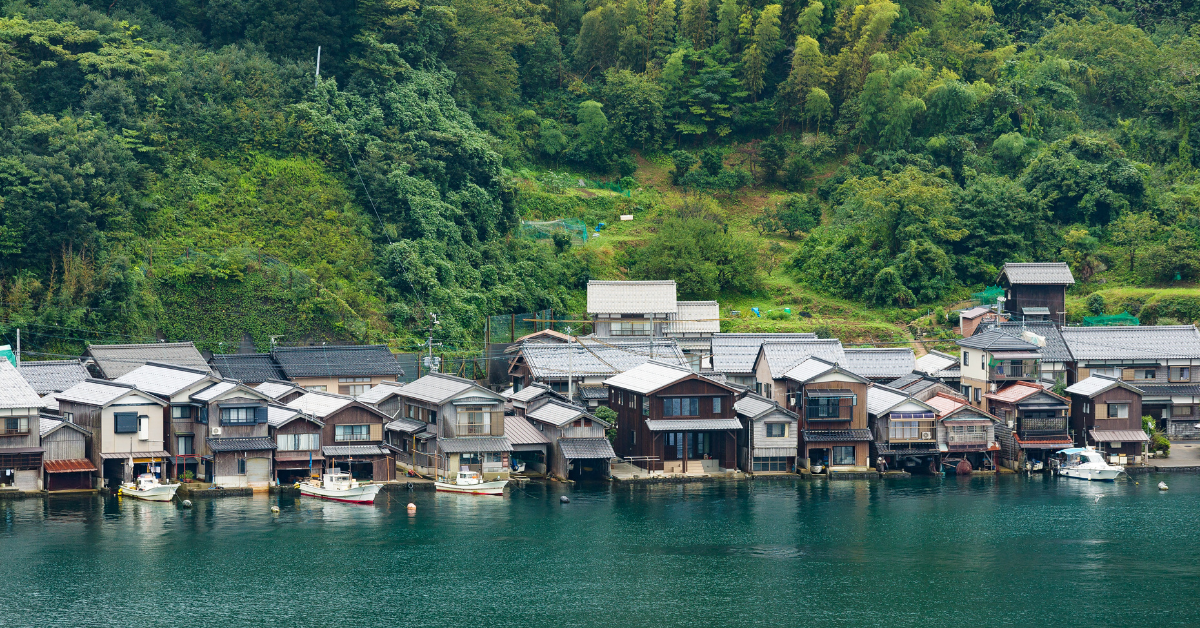Nestled in northern Kyoto, the seaside town of Ine is lined with funaya houses that blend daily living with the sea. For Japanese visitors, these wooden homes are more than just architecture—they are a reflection of history, culture, and nostalgia. This article explores how Japanese people describe their experiences in Ine and why it remains one of Japan’s most enchanting hidden villages.
- Features of Funaya Houses and Japanese Impressions
- Views from the Sea and Recommended Experiences
- Summary of Japanese Impressions of Ine
- Seasonal Beauty of the Funaya
- Seasonal Impressions of Funaya
- Specific Impressions from Japanese Visitors
- What Japanese Visitors Value Most
- Key Points for Foreign Visitors
- Recommended Experiences for Foreign Travelers
- Conclusion
Features of Funaya Houses and Japanese Impressions
Funaya houses embody a style of architecture unique to Japan. Rooted in a lifestyle closely tied to the sea, the design with a boat garage on the first floor is not only highly practical but also aesthetically pleasing.
Japanese visitors often say, “It is surprising how seamlessly the sea and daily life are integrated” or “It feels like stepping back into traditional Japan.” For city dwellers surrounded by modern housing, the sight of funaya evokes nostalgia and a tangible sense of ancestral wisdom.
Wooden construction gives the houses warmth, while their endurance against sea winds makes many remark that they “tell the story of long history.” Some even say they are reminded of their grandparents’ home, which stirs sentimental feelings.
Views from the Sea and Recommended Experiences
The true charm of Ine’s funaya is best appreciated from the water. Many Japanese visitors remark, “It looks as if the houses are floating on the sea” when seen from sightseeing boats.
Each season changes the scenery: in spring, fresh greenery surrounds the sea; in summer, sunlight makes the funaya shine; in autumn, colorful leaves reflect in the water; in winter, snow turns the village into a quiet, timeless scene.
The sunset is particularly memorable. The moment when both the sea and rooftops glow orange is often described as “like a painting” or “so beautiful it left me speechless.”
Summary of Japanese Impressions of Ine
| Aspect | Japanese Impressions |
|---|---|
| Architecture | Surprised and charmed by the integration of boats and houses |
| Scenery | The landscape evokes “the beauty of old Japan” |
| Experience | Boat views are described as “like a movie scene” |
| Atmosphere | The peaceful village air is healing for many |
Seasonal Beauty of the Funaya
Ine offers distinctly different scenery throughout the year. Spring brings cherry blossoms and young leaves, summer is filled with the bustle of fishing activity, autumn is painted with vivid red and yellow leaves, and winter transforms the village into a snow-covered wonderland.
Japanese visitors consistently say, “The same place feels completely different depending on the season.” Some note, “I came in both spring and autumn, and it felt like visiting two entirely different towns.”
Seasonal Impressions of Funaya
| Season | Features | Japanese Impressions |
|---|---|---|
| Spring | Cherry blossoms and greenery | “Refreshing contrast between sea and mountains” |
| Summer | Bright sunlight on the sea and houses | “Energetic and full of life” |
| Autumn | Autumn leaves reflecting in the water | “Rich colors and beauty” |
| Winter | Snow and silence | “Dreamlike, as if time had stopped” |
Specific Impressions from Japanese Visitors
The words of those who have visited Ine reveal heartfelt emotions. One visitor said, “The moment I saw the funaya, memories of fishing villages from my childhood came back.” Another recalled, “I will never forget the sunset from the sightseeing boat.”
Those who joined fishing experiences or ate local food commented, “Eating freshly caught fish right here is the best” and “The blending of everyday life and tourism feels natural.” These impressions show that the funaya are not just tourist attractions but living cultural spaces.
What Japanese Visitors Value Most
| Element | Specific Impressions |
|---|---|
| Scenery | “The fusion of sea and houses is rare even worldwide” |
| Food | “Local seafood dishes are exceptional” |
| People | “Villagers welcomed us warmly” |
| Culture | “Could directly feel the lifestyle of a fishing village” |
Key Points for Foreign Visitors
The appeal of Ine’s funaya goes beyond their unusual appearance. Japanese people are moved because they feel “the harmony of nature and human life.” The quiet atmosphere and practical wisdom of living with the sea leave a deep impression.
For foreign travelers, this is a rare chance to experience traditional Japanese living. By not only viewing the houses but also joining boat rides or fishing activities to share the feelings Japanese visitors describe, one can gain a deeper understanding and a more memorable experience.
Recommended Experiences for Foreign Travelers
| Activity | Why Japanese Visitors Recommend It |
|---|---|
| Boat tour | “The most beautiful way to see the funaya” |
| Fishing experience | “Gives a hands-on sense of daily life” |
| Staying overnight | “Lets you feel the lifestyle atmosphere” |
| Eating local food | “Fresh seafood is enjoyed at its peak” |
Conclusion
For Japanese people, Ine’s funaya are a source of nostalgia and peace. They symbolize the coexistence of nature and human life. The beauty lies not only in the architecture and scenery but also in the culture and lifestyle that continue within the village.
When foreign visitors come to Ine, experiencing the views from the sea and the seasonal changes—while sharing the same feelings that Japanese travelers express—will turn the visit into more than sightseeing. It becomes an authentic cultural experience that stays in the heart.






